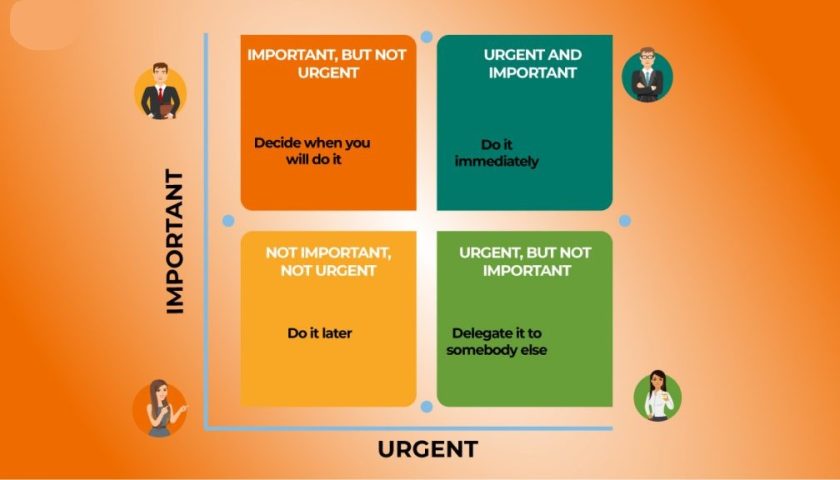Most effective tools are often the simplest one. One such tool is The Eisenhower Matrix, often also known as Urgent-Important Matrix. The US President Dwight D. Eisenhower supposedly once said: ‘The most urgent decisions are rarely the most important ones’ and he was very right in his assessment.
Many people don’t know that Eisenhower is considered a master of time management, i.e. he had the ability to do everything as and when it needed to be done. Prioritizing your task to manage time and ensure maximum productivity was never as important as in this dynamic digital age.
The tool, therefore, becomes much more relevant in today’s context when every individual has to deal with multiple tasks facilitated by rapid development in technology. You will have a pile of emails in the morning and when you attempt to address them, suddenly a WhatsApp message pops up in your smartphone. Even before you had a chance to look at it, your phone suddenly rings and a seemingly important task needs to be performed.
The origin of the Eisenhower Matrix
Dwight D. Eisenhower was the 34th President of the United States from 1953 until 1961. He had the distinction of serving earlier as a general in the US Army as the Allied Forces Supreme Commander during World War II and later the NATO Supreme Commander.
Even before taking up the charge of US President his earlier duties involved making important decisions in a short interval of time. This obviously required a great deal of planning and prioritization to manage his better than most. This led him to invent the world-famous Eisenhower principle, which today helps us prioritize by urgency and importance.
How to use the Eisenhower Matrix?
Whatever the job that lands on your desk, begin by breaking it down according to the Eisenhower method (see model below), and then decide how to proceed. Prioritizing tasks by urgency and importance results in 4 quadrants with different work strategies:
We often focus too strongly on the ‘urgent and important’ field, on the things that have to be dealt with immediately. Ask yourself: When will I deal with the things that are important, but not urgent? When will I take the time to deal with important tasks before they become urgent? This is the field for strategic, long-term decisions.
1. Urgent and Important Tasks
These tasks receive the highest priority and should be your focus for completion at the earliest. Most often these tasks need to be attended and completely immediately.
2. Important, but Not Urgent tasks
These are often the long-term goals and tasks that are important but don’t have a firm deadline yet. You should schedule them in a timely manner, doing the most urgent ones right after you’ve finished everything from the “Do” quadrant.
3. Not Important, but Urgent tasks
These are the tasks that you should look to delegate to other professionals, colleagues, subordinated or appoint to complete yourself if you must, but to be attempted only after your first and second quadrant tasks are completed.
4. Not Important and Not Urgent tasks
The tasks are placed in the “Delete” quadrant because you should eliminate doing them. This may vary due to the perception of urgency and importance, but mainly these tasks don’t even need to be done and would be considered a complete waste of time by most people.
| Another method of organizing your time better is attributed to the multimillionaire Warren Buffett.
– Make a list of everything you want to get done today |


